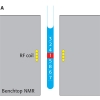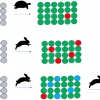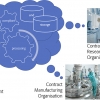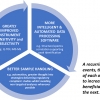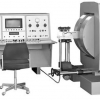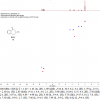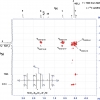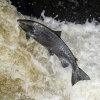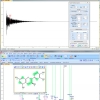Articles
NMRium browser-based nuclear magnetic resonance data processing
Tony Davies and Luc Patiny introduce us to free online NMR data processing tool in “NMRium browser-based nuclear magnetic resonance data processing”. They run through the background to the project, how it works and how you can try it yourself. There is a video introduction and an online demo page where you can play with different scenarios.
FAIR practice
Following our articles on the FAIR initiative, we now look at some examples of the FAIRification of data handling, collection and archiving.
Sweeping Apparatus for Polarisation Enhancement (SWAPE) in benchtop nuclear magnetic resonance spectroscopy
This article describes a clever adaptation to benchtop NMR experiments that allows the collection of multiple scans (to produce high signal-to-noise ratios) without the time penalties involved.
analytica virtual 2020: a new platform in times of contact and travel restrictions
How did a major trade show organiser cope with the disruption of COVID-19? Susanne Grödl, Exhibition Director of analytica for Messe München, gives her experience.
When to automate spectroscopic data processing
Whilst automation is not a panacea, it can improve the accuracy of manual tasks as well as freeing up our time for more challenging tasks. The authors explore some particular examples they have come across and lessons learned from them.
COVID-19 #2: Compliant data processing from your home office
Tony Davies and Mohan Cashyap discuss this topic with help from a number of industry experts. Whilst there are undoubted computing and networking issues for regulated industries in allowing working from home as if the user was in the lab, they are not insurmountable.
COVID-19: Lock-down and up-skill
With a significant proportion of our regular readership probably under home lock-down, we were wondering if we could help you at this difficult time by pointing out some useful online resources. So, when we finally come out of this pandemic, you could do so better skilled and more up-to-date than when we went in to it.
Planning for EuroAnalysis 2021
Tony and Lutgarde Buydens give us an update on the planning for the major EuroAnalysis 2021 conference, which is being held in Nijmegen, the Netherlands, at the end of August 2021. At this stage, they are keen to gather suggestions from readers on topics they would like to see covered. Groups are also invited to consider hosting their own event under the EuroAnalysis 2021 banner.
Investigating lithium ion batteries with magnetic resonance techniques
Rechargeable lithium ion batteries (LIBs) have a significant role in modern society: from portable electronic devices to electric cars and bicycles. Indeed, I would be surprised if anyone reading this does not have a LIB on or near them now. Both NMR and EPR spectroscopies and their imaging modalities can provide useful information, which will prove important in battery research and the development of ever improving batteries.
Pragmatic path between targeted and non-targeted ultra-trace analysis
A recent conference on Extractables and Leachables in Hamburg not only allowed two ex-colleagues to meet after many years, but also provided information on developments and trends in the regulatory environment. Not only are ever lower levels of detection required, but also analytical requirements are being placed on companies further back in the materials’ supply chain that have not had to make such considerations before.
Are omics the death of Good Sampling Practice?
Tony Davies and Roy Goodacre raise some issues around the reliance just on vast quantities of data collection in omics experiments. As they put it, should we “just keep throwing the mass spectra, nuclear magnetic resonance data sets and our ion mobility fingerprints onto a big pile for the statisticians to fight over?”.
A week in the life of a PhD student
An interesting insight into, well, a week in the life of the author as a fourth-year PhD student. Katie is working on investigating a way of detecting liver damage using spectroscopy, which is “about as interdisciplinary as you can get”! I’m sure all readers will find it interesting and it may be helpful for those you know who may be considering a PhD.
Spotlight on nuclear magnetic resonance: a timeless technique
Clemens Anklin gives a short history of the commercial and technical development of NMR. From the first measurement of nuclear spin in 1937 by Rabi and his 1943 Nobel Prize to recent developments in small NMR spectrometers and instrument company changes.
What developments do you need to work more efficiently?
Tony Davies continues his quest to find out what you all need to work more efficiently. You will remember that in the last issue, Tony introduced his survey to discover what developments were needed in spectroscopy by readers. Some of the initial responses are explored, and Tony finds that he has opened a “can of worms”.
Simplifying spectroscopic supplementary data collection
Tony Davies and a number of others consider collecting supplementary spectroscopic data. Like Eurospec, the plan is to use such supplementary data not only to enhance the published paper, but also to aid thorough peer-review by allowing reviewers access to the full data rather than, as Tony puts it, “low-resolution images of data”. I’m sure you will be interested in a look at the future through this column.
Day-to-day inorganic nuclear magnetic resonance spectroscopy
Developments in hardware, higher field instruments, better multinuclear probes including cryoprobe options, spectrometer control systems and also desktop NMR data processing software have all combined to make the measurement of inorganic nuclei a potentially commonplace and very helpful, often complementary, technique to other spectroscopic analytical tools.
Updating IUPAC spectroscopy recommendations and data standards
In this article, it is discussed why International standards need to keep pace with the innovation in analytical equipment and practices.
Dates and fates of pyrogenic carbon: using spectroscopy to understand a “missing” global carbon sink
Research into climate change takes many directions, but storing carbon or understanding its release from stores is extremely important. Pyrogenic carbon comes from the incomplete burning of biomass, and can be natural, e.g. wild fires, or man-made, e.g. the production of charcoal. The authors describe the uses of a range of spectroscopy techniques to understand the molecular structure of pyrogenic carbon and its role in the global carbon cycle.
The emerging use of magnetic resonance imaging to study river bed dynamics
Fine sediments, often due to run-off from the land, can clog the surface and sub-surface spaces in gravel beds used by spawning fish to lay their eggs and by aquatic insects. Without an adequate flow of oxygenated water, the eggs and insects die. Heather Haynes, Susithra Lakshmanan, Anne-Marie Ockelford, Elisa Vignaga and William Holmes tells us about this in “The emerging use of magnetic resonance imaging to study river bed dynamics”. They have studied the infiltration of various sediments into model gravel beds both outside and flowing through a MRI instrument! They conclude that MRI “provides an exciting opportunity to unravel a plethora of processes relevant to wider environmental science”.
Another one bites the dust
Tony Davies and Mohan Cashyap are concerned about your NMR data. When an article starts “On 10 October 2014 the impossible happened”, you will want to take note! Following the withdrawal of Agilent from the NMR business, Tony and Mohan consider three solutions to ensuring your NMR data is available now and into the future. If you have an NMR of any make, you will want to read this. Do remember that you can comment on the web version of the article.



